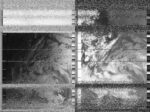Public Archive
A patchy record of DIY satellite imagery and weather notes since 2020. The open-weather public archive is open to everyone willing and able to contribute.
Words for Climate
An evolving set of words chosen by contributors to reflect their experiences of the climate crisis.
Filter by
Ground Station Type
Automatic Ground Stations are local, semi-permanent stations that record and upload satellite transmissions automatically once per day. Manual ground stations are DIY and often mobile; operators manually record and upload satellite transmissions.
Satellites
The archive contains Automatic Picture Transmissions (APT) by US weather satellites NOAA-15, NOAA-18 and NOAA-19.
Nowcasts
Collective earth-sensing events led by open-weather, co-produced by a network of contributors around the world.
Contributors
A list of tagged contributors only. Please contact us if you want to be added.
Automatic Ground Stations
Search
2587 archive entries
× Clear Filters
2025-08-07 09:30:00
Foto Colectania
Hangar
Ràdio Web MACBA
Barcelona, Spain
Spain
NOAA-15

2025-08-07 18:56:00
Oppressive Heat Project
Phnom Penh, Cambodia
Cambodia
NOAA-15
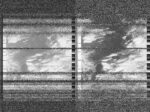
2025-08-07 08:30:00
Heidi Neilson
Gilboa, New York, United States
United States
NOAA-15
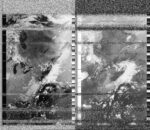
2025-08-07 08:52:00
Zack Wettstein
Seattle, United States
United States
NOAA-15

2025-08-07 20:02:00
Nastassja Simensky
Longyearbyen, Svalbard
Svalbard
NOAA-19

2025-08-08 09:55:00
Oppressive Heat Project
Phnom Penh, Cambodia
Cambodia
NOAA-19

2025-08-07 23:59:00
Diana Engelmann
Filip Shatlan
Gainesville, Florida , United States
United States
NOAA-19

2025-08-08 10:29:00
Maufox
Mauritius, Mauritius
Mauritius
NOAA-19

2025-08-08 08:09:00
Diana Engelmann
Filip Shatlan
Gainesville, Florida , United States
United States
NOAA-15
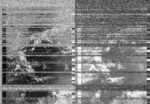
2025-08-08 12:12:16
Richard A Carter
University of York, Campus East, United Kingdom
United Kingdom
NOAA-19
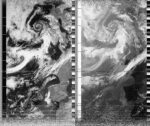
Another concurrent viewing of the atmosphere from above and below, using the Nephoscope programme to pull out poetry from the passing clouds. Strong winds about still in the aftermath of an 'unseasonable' Storm Florin, but my general sense this summer is that the winds have been strong overall. The battered state of my radio antenna, blown over many times, is testament to this.
2025-08-08 17:12:00
Nastassja Simensky
Longyearbyen, Svalbard
Svalbard
NOAA-15

2025-08-08 12:25:00
Diana Engelmann
Filip Shatlan
Gainesville, Florida , United States
United States
NOAA-19

2025-08-08 20:23:00
Foto Colectania
Hangar
Ràdio Web MACBA
Barcelona, Spain
Spain
NOAA-15

2025-08-09 07:00:00
Oppressive Heat Project
Phnom Penh, Cambodia
Cambodia
NOAA-15

2025-08-08 22:06:00
Heidi Neilson
Gilboa, New York, United States
United States
NOAA-19
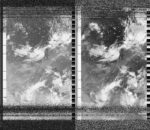
2025-08-08 19:48:00
Zack Wettstein
Seattle, United States
United States
NOAA-15

2025-08-08 22:32:00
Zack Wettstein
Seattle, United States
United States
NOAA-19

2025-08-09 10:16:00
Maufox
Mauritius, Mauritius
Mauritius
NOAA-19

2025-08-09 16:46:00
Nastassja Simensky
Longyearbyen, Svalbard
Svalbard
NOAA-15

2025-08-09 22:49:00
Foto Colectania
Hangar
Ràdio Web MACBA
Barcelona, Spain
Spain
NOAA-19

2025-08-09 21:53:00
Heidi Neilson
Gilboa, New York, United States
United States
NOAA-19
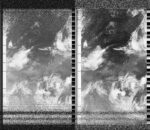
2025-08-09 19:22:00
Zack Wettstein
Seattle, United States
United States
NOAA-15

2025-08-10 09:30:00
Oppressive Heat Project
Phnom Penh, Cambodia
Cambodia
NOAA-19

2025-08-09 22:19:00
Zack Wettstein
Seattle, United States
United States
NOAA-19

2025-08-10 10:03:00
Maufox
Mauritius, Mauritius
Mauritius
NOAA-19

2025-08-10 09:51:00
Foto Colectania
Hangar
Ràdio Web MACBA
Barcelona, Spain
Spain
NOAA-15

2025-08-10 08:52:00
Heidi Neilson
Gilboa, New York, United States
United States
NOAA-15
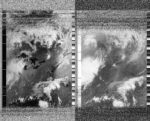
2025-08-10 08:57:00
Diana Engelmann
Filip Shatlan
Gainesville, Florida , United States
United States
NOAA-15

2025-08-10 09:13:00
Zack Wettstein
Seattle, United States
United States
NOAA-15

2025-08-10 19:24:00
Nastassja Simensky
Longyearbyen, Svalbard
Svalbard
NOAA-19

2025-08-10 18:33:02
Richard A Carter
York, United Kingdom
United Kingdom
NOAA-15
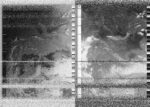
A difficult effort in a far from ideal spot, hemmed in by late summer foliage, and propping the antenna unsteadily on my shoulder. A noisy outcome, reminding me of my very first attempts at signal gathering just over a year or so ago. It feels apposite, in light of the news that NOAA 15 and 19 are to be fully decommissioned in the next few days - grateful to have had the chance to do this work in their final year of operation.
2025-08-10 20:12:42
Richard A Carter
York, United Kingdom
United Kingdom
NOAA-15
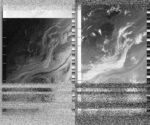
2025-08-10 21:38:33
Richard A Carter
York, United Kingdom
United Kingdom
NOAA-19
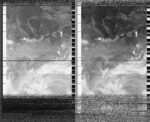
A nocturne – listening to signals under the stars.
2025-08-10 22:07:00
Zack Wettstein
Seattle, United States
United States
NOAA-19

2025-08-11 09:50:00
Maufox
Mauritius, Mauritius
Mauritius
NOAA-19

2025-08-11 09:25:00
Foto Colectania
Hangar
Ràdio Web MACBA
Barcelona, Spain
Spain
NOAA-15

2025-08-11 10:55:00
Nastassja Simensky
Longyearbyen, Svalbard
Svalbard
NOAA-15

2025-08-10 19:31:53
Soph Dyer
An Der Kehrbachbrücke, Wiener Neustadt, Austria
Austria
NOAA-15
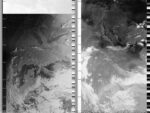
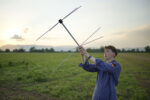
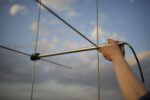
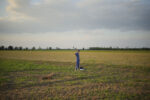
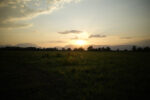
Endings are eerie.
2025-08-11 08:26:00
Heidi Neilson
Gilboa, New York, United States
United States
NOAA-15
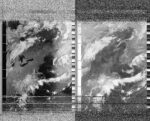
2025-08-11 08:47:00
Zack Wettstein
Seattle, United States
United States
NOAA-15

2025-08-09 12:00:27
Alison Scott
Arbroath, United Kingdom
United Kingdom
NOAA-15

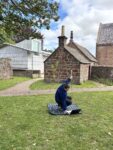
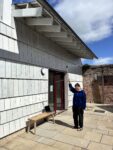
The first pass as part of the Hospitalfield Summer Festival.
2025-08-09 21:54:46
Alison Scott
Arbroath, United Kingdom
United Kingdom
NOAA-19

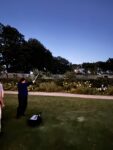
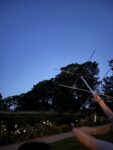
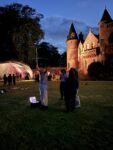
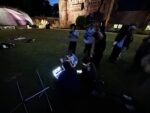
Listening to NOAA-19 at the end of the Hospitalfield Summer Festival.
2025-08-11 19:46:08
Richard A Carter
York, United Kingdom
United Kingdom
NOAA-15
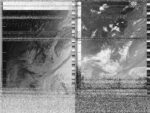
2025-08-11 19:47:22
Alison Scott
Arbroath, United Kingdom
United Kingdom
NOAA-15
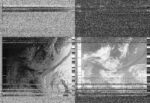
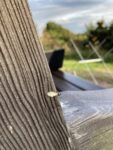
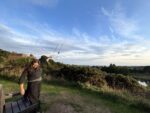
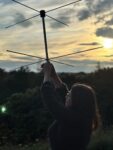
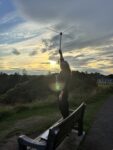
I'm over at the water tower again, with its dishes and antennas that I wonder the purpose of. It's not the best spot in terms of obstacles but it's quite high and the sky is open to the south west (trees, water tower). It's a warm evening, a summer glow cast over the pond and out towards the seafront. In the tall grass are a few blue corn flowers in front of me, a patch of purple thistles and yarrow. Sky full of gulls, swallows and wood pigeons. We're at a bench, which is covered in ants, it transpires, some with wings. We talk about the myth of 'flying ant day'. The weather is favourable for this particular colony to emerge (warm and calm). Aaron has come with me on account of it 'maybe being the last time' to listen to NOAA-15. I didn't know that the last time listening to NOAA-19 would be on Saturday, at the end of the summer festival. Tried to listen to NOAA-19 this morning. Dead air. Tonight, more of a fuzz than expected but happy just to hear the familiar sound pass over as the sun sets.
2025-08-12 07:22:00
Oppressive Heat Project
Phnom Penh, Cambodia
Cambodia
NOAA-15
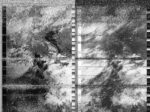
2025-08-12 07:54:00
Maufox
Mauritius, Mauritius
Mauritius
NOAA-15

2025-08-11 21:54:00
Zack Wettstein
Seattle, United States
United States
NOAA-19
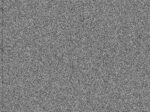
2025-08-12 09:40:54
Alison Scott
Arbroath, United Kingdom
United Kingdom
NOAA-15

Left it too late to get up the road in time. Antenna quickly stuck out the back door to the house. It's already warm, a close clammy morning, even though the sun hasn't reached the garden yet. A partial image. On the news this morning, wildfires in Scotland, Greece and France. Genocide being named as such by the Scottish government.
2025-08-12 09:34:12
Richard A Carter
York, United Kingdom
United Kingdom
NOAA-15
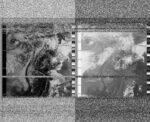
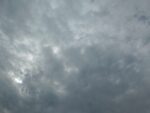

One last call - Almost surprised to hear a signal come through. The ringing music of the APT cascading down the waterfall. A warm, heavy atmosphere in the grey morning - new discussions of drought in the news. How does one write for an ending such as this? NOAA 19 is a source of static now, but the older 15 carries on - officially on its last day. I want to write something that feels up to the occasion, something that draws together the technology, the politics, the science, the history, the Earth itself - to acknowledge the conjunction of processes, human and more-than-human, that come together for an instrument such as this, and which will flow into new configurations after today. I don’t trust myself for this task - preferring to let the clouds above, the passing wind, and the (unsteady) antenna, do the speaking for me. Their particular registers of being are enough for this moment - and, of course, our attentiveness towards them.
Perhaps this is what sounding out the NOAA satellites has meant to me over the past year or so. We have myriad technologies of attention, and modes of being attentive that are bound up with them. Each satellite pass is a duration that requires a particular act of observing to sustain - a temporary entanglement of various artefacts and processes and practices that all must hold. I’ve been reminded afresh that satellite images are no straightforward “snapshots” of the planet, but always emerge from a period of sitting with it, as the satellite passes and the signal downloads and the picture builds. The data, of course, is then woven into a far bigger durational image, but the act of attention required for each pass feels significant in its own right - as a manifestation of the kinds of attentiveness and being with the world that is needed more than ever.
There is another NOAA 15 pass in 10 minutes, very low angle, 10 degrees. I will listen, but may not record. The act of listening, and reflecting, and observing, is perhaps enough.
I always wanted to get involved in gathering satellite signals, but the Open Weather project gave me the inspiration and guidance to do so - for that I am very grateful.
2025-08-12 13:57:00
Nastassja Simensky
Longyearbyen, Svalbard
Svalbard
NOAA-19

2025-08-11 19:05:46
Soph Dyer
Augarten, Austria
Austria
NOAA-15
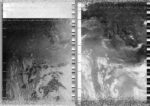
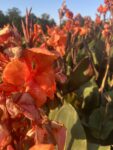
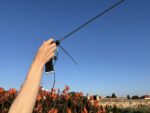
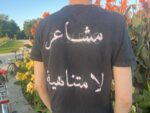
2025-08-12 20:18:00
Foto Colectania
Hangar
Ràdio Web MACBA
Barcelona, Spain
Spain
NOAA-15

2025-08-12 11:53:00
Zack Wettstein
Seattle, United States
United States
NOAA-19
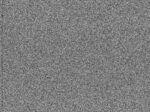
2025-08-12 19:20:37
Richard A Carter
York, United Kingdom
United Kingdom
NOAA-15
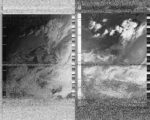
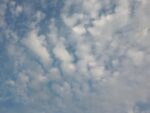
2025-08-12 19:22:00
Alison Scott
Carnoustie beach, near the golf course , United Kingdom
United Kingdom
NOAA-15
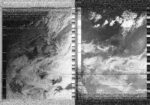
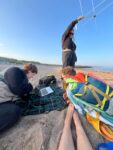
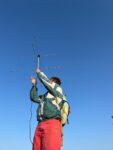
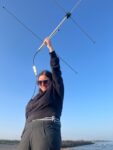
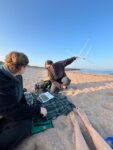
Even at the end, a joy to introduce friends to this practice. We listen to NOAA-15 on the beach, after an evening swim. It's been a hot day, another UK heatwave. Sun going down, tide going out. Eager questions. I explain I'm a bit worried we won't hear anything. I'm also a bit worried about getting sand in my laptop. Pointing the antenna straight out to sea, after the static we grin as the rhythm comes through, steady, strong. We talk about the feeling of listening to the satellite and its likeness to jumping in the sea. Feeling small, insignificant, located, connected.
2025-08-11 20:44:58
Sasha Engelmann
Miroir d'eau, Bordeaux, France
France
NOAA-15

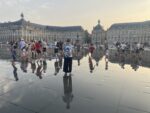
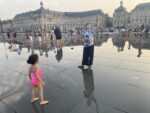
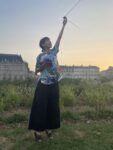
A waning, red moon; a mirroir de l’eau; a dying satellite. One of the last passes I may capture from a NOAA satellite echoes the very first on a beach in Cornwall in 2019. There, standing in the intertidal zone, I read an early version of the poem ‘satellite séance’ while receiving a live satellite image. The 'mirroir' in which I am standing today is a point of séance for many other bodies and reflections, especially given the 37 degree heat. NOAA-15, by far the oldest of the three remaining analogue satellites (having transmitted for 27 years, 2 months and 29 days) is the last to send a 137 MHz radio signal to the ground.
Most of all, I am amazed at the way this project has gathered people inside and around it. Since open-weather launched in 2020, hundreds of people have built DIY radio antennas, tracked NOAA satellites, and received images, each time adding to the sense that seeing the earth and its weather through distant orbiting machines does matter, and in ways we, as practitioners, cannot foreclose or forefeit. In practising together, we opened and expanded what 'remote sensing' means.
I am clumsy in my sandals as I stretch my antenna to the sky, my centre of gravity warped by the small human in my belly who is growing every day. I wonder if she can hear the ‘tick tock’ of NOAA-15 amidst the laughter of small children skipping on the ‘mirroir’, the rush of evening taxis, and the boats on the Garonne. My partner smiles as a toddler in a bright pink swimsuit stops her skipping right in front of me, plants her feet and stares. I hope, in some small way, the passing moment we share inspires a curiosity, a story.
2025-08-12 19:20:00
Heidi Neilson
Gilboa, New York, United States
United States
NOAA-15
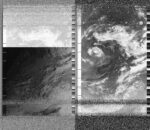
2025-08-12 19:43:00
Zack Wettstein
Seattle, United States
United States
NOAA-15
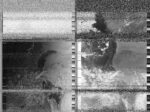
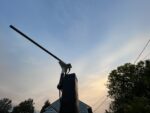
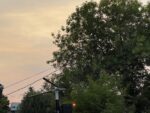
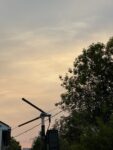
This may be one of the last images captured by our AGS in Seattle, which was decoded at dusk from NOAA 15, and it happens to be on one of our hottest days of the year, with a sun setting behind a large plume of wildfire smoke blowing into the Puget Sound from the Bear Gulch fire burning on the Olympic Peninsula. It is a stunningly striking and somber sunset, as we also witness the sunset on a program of instruments that have allowed use to capture and observe data in real time on the ground, all the way from LEO. It seems only appropriate that during these days of increasing heat and smoke are the times when we turn off these instruments to fly blindly into a future of anthropogenic climate change...
2025-08-12 22:57:00
Heidi Neilson
Gilboa, New York, United States
United States
NOAA-19
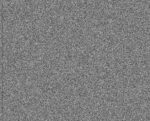
2025-08-13 07:27:00
Maufox
Mauritius, Mauritius
Mauritius
NOAA-15

2025-08-12 21:41:00
Zack Wettstein
Seattle, United States
United States
NOAA-19
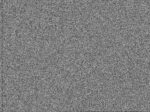
2025-08-13 08:32:15
Soph Dyer
Rooseveltplatz, Wien, Austria
Austria
NOAA-15

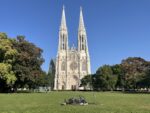
On the way to work I pull over to listen for NOAA-15, which is transmitting despite having been scheduled to be decommissioned yesterday. I set-up my ground station opposite the Votivkirche and brace myself for lots of radio frequency noise. The small park I am in is ringed by tall buildings and traffic, beneath is a subterranean car park and construction site for one of the city's new subway lines. I am also encircled by trams, whose overhead power lines surely leak radio waves.
Against the odds, I hear the familiar, piercing, beep beep of NOAA-15. In a Facebook group, I had read comments that said its signal was weak, yet it rises above the radio noise.
The experience is like listening to someone who has come back from dead. NOAA-15 is meant to be silent, stuck in lifeless orbital decay. Yet since NOAA-19 developed an 'anomaly' and stopped transmitting on Sunday, the satellite's decommissioning has been postponed by a week. In other words, it’s surviving on borrowed time. As I receive its transmission, I imagine that in a last act of resistance NOAA-19 has sabotaged the planned decomissioning, taking control of its timeline and gifting NOAA-15 a extra week of life.
2025-08-13 12:13:00
Foto Colectania
Hangar
Ràdio Web MACBA
Barcelona, Spain
Spain
NOAA-19

2025-08-13 13:44:00
Nastassja Simensky
Longyearbyen, Svalbard
Svalbard
NOAA-19

2025-08-13 21:42:00
Oppressive Heat Project
Phnom Penh, Cambodia
Cambodia
NOAA-19
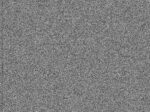
2025-08-01 09:20:00
Centre for People, Place and Planet (AU)
Perth, Australia
Australia
NOAA-19


Capturing our first ever manual transmission from NOAA-19 in-between the walls of Spectrum gallery.
2025-08-07 09:37:00
Centre for People, Place and Planet (AU)
Perth, Australia
Australia
NOAA-19
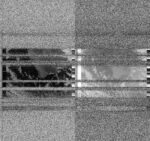


Second manual transmission behind the walls of the gallery; chasing the sweet humming of NOAA-19. Getting better at capturing the signal and receiving the weathercasting.
2025-08-12 06:52:00
Centre for People, Place and Planet (AU)
Perth, Australia
Australia
NOAA-15
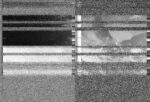


Third manual signal capturing and best so far. Make-shift manual weather station. Behind the walls of the gallery, we wait for the weathercasting.
2025-08-13 11:40:00
Zack Wettstein
Seattle, United States
United States
NOAA-19
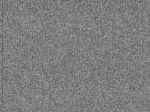
2025-08-13 18:54:00
Heidi Neilson
Gilboa, New York, United States
United States
NOAA-15
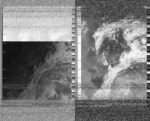
2025-08-13 19:18:00
Zack Wettstein
Seattle, United States
United States
NOAA-15
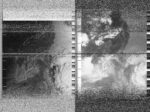
2025-08-14 07:01:00
Maufox
Mauritius, Mauritius
Mauritius
NOAA-15

2025-08-14 11:16:00
Nastassja Simensky
Longyearbyen, Svalbard
Svalbard
NOAA-15

2025-08-14 12:00:00
Foto Colectania
Hangar
Ràdio Web MACBA
Barcelona, Spain
Spain
NOAA-19

2025-08-14 08:47:00
Heidi Neilson
Gilboa, New York, United States
United States
NOAA-15
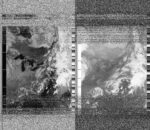
2025-08-14 08:52:00
Diana Engelmann
Filip Shatlan
Gainesville, Florida , United States
United States
NOAA-15
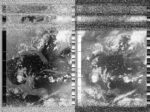
2025-08-14 21:29:00
Oppressive Heat Project
Phnom Penh, Cambodia
Cambodia
NOAA-19
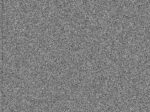
2025-08-14 09:08:00
Zack Wettstein
Seattle, United States
United States
NOAA-15
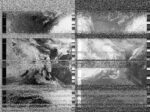
2025-08-14 11:27:00
Zack Wettstein
Seattle, United States
United States
NOAA-19

2025-08-14 20:09:39
Alison Scott
Arbroath, United Kingdom
United Kingdom
NOAA-15
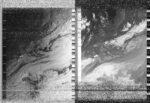
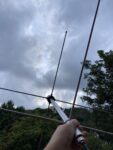
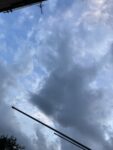
The storm is not long passed. A muggy day, building to the break. Two hours of thunder, darkened skies and flashes of lightning. I watch my friends in nearby Dundee share pictures of walnut sized hail, as the streets flash flood. Here, the hail is less extreme. I was going to listen to an earlier pass but heeded warnings of lightning - the air had felt static. Now, it's calm and everything is soaking. I'm just at the back door again, laptop inside, antenna outside. Leaves are splayed widely after being pummeled by the downpour. My neighbour's back door is also open and I wonder what they'd say if they popped out now. The sound of NOAA-15 merges with the dance music on the radio in my kitchen. I look up at the clouds, patchy, the sun is a low orange glow. The neighbour's aerial pokes out from the building. There's something about the switch in scale that always hits me, from my domestic interiority to beyond, from below to above the clouds. I come inside just in time: I write this the rain starts again, straight and heavy. Catching these moments, I'm feeling melancholic, thinking on the thinking and writing this practice has sparked, the sociality of it. The influence of doing this over the last 5 years I find hard to measure.
2025-08-15 06:35:00
Maufox
Mauritius, Mauritius
Mauritius
NOAA-15

2025-08-15 09:20:00
Foto Colectania
Hangar
Ràdio Web MACBA
Barcelona, Spain
Spain
NOAA-15

2025-08-15 10:50:00
Nastassja Simensky
Longyearbyen, Svalbard
Svalbard
NOAA-15

2025-08-15 18:47:00
Oppressive Heat Project
Phnom Penh, Cambodia
Cambodia
NOAA-15
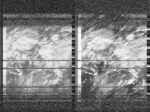
2025-08-15 08:21:00
Heidi Neilson
Gilboa, New York, United States
United States
NOAA-15
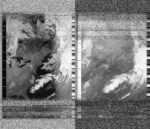
2025-08-15 19:00:00
Maufox
Mauritius, Mauritius
Mauritius
NOAA-15

2025-08-15 08:42:00
Zack Wettstein
Seattle, United States
United States
NOAA-15
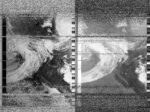
After weeks of excessive heat and smoke, today's image from NOAA 15 captures the arriving atmospheric river, bringing much needed rain amidst a record-setting drought in the Western US and Washington, and the first hints of fall on the horizon. At this point, each additional day of decoding a transmission from the one remaining program satellite is a gift.
2025-08-15 11:15:00
Zack Wettstein
Seattle, United States
United States
NOAA-19
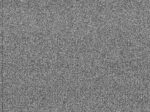
2025-08-14 19:45:03
Alison Scott
Arbroath , United Kingdom
United Kingdom
NOAA-15

Back garden NOAA-15 listen again. Sky a flat grey. Fairly still. Another break in the drizzle. Neighbour does pop out this time. 'Don't let me get in the way of your signal'. Surprisingly few questions.
2025-08-16 06:10:00
Maufox
Mauritius, Mauritius
Mauritius
NOAA-15

2025-08-16 09:54:00
Oppressive Heat Project
Phnom Penh, Cambodia
Cambodia
NOAA-19
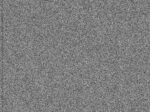
2025-08-16 07:49:00
Maufox
Mauritius, Mauritius
Mauritius
NOAA-15

2025-08-16 18:35:00
Maufox
Mauritius, Mauritius
Mauritius
NOAA-15

2025-08-16 17:03:00
Nastassja Simensky
Longyearbyen, Svalbard
Svalbard
NOAA-15

2025-08-16 20:15:00
Maufox
Mauritius, Mauritius
Mauritius
NOAA-15

2025-08-16 19:18:12
Alison Scott
Arbroath, United Kingdom
United Kingdom
NOAA-15

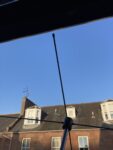
Another inside/ outside capture, this time poking the antenna out of the upstairs window. I've been outside a lot - if these notes make it seem I barely leave the house - and missed the other passes. The satellite is passing more to the east, so I'm on the other side of the house. It's a bit awkward, my arms get tired holding the antenna out beyond the building, swapping hands often and holding tight. The window sills are deep because of the old stone walls so I'm leaning quite a lot. Crows, seagulls and wood pigeons take turns at perching on the aerials across the road. There's a clear, cloudless blue sky and sun hits the rooftops. It makes the red sandstone glow a bright burnt orange. The storm has passed but until mid-afternoon the town was covered in a low cloud or haar that felt it could burn off any moment. When we were down at the beach, finding shell riddled hagstones and quartz veined pebbles, it was quiet. The sleepy feeling of early morning pushed through until the sun and the crowds came bursting out. It's the last weekend of the school holidays. I think I caught the sun on my face while cycling back along the coast. I'm quite happy to be inside now. We've had Joe to stay, who keenly remembered the satellite's sounds from working on a audio piece with me for an exhibition in 2021. It merged my daily recordings with extracts from personal weather diaries found in the Scottish Meteorological Society archives - made close to when I started listening to these orbiting bodies. Things (that) come back around. We talk about space junk. Archives. We have other conversations about silence, how it can be so loud, so felt.
2025-08-16 08:18:15
Steve Engelmann
Venice Pier, United States
United States
NOAA-15
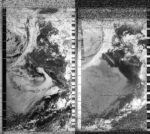
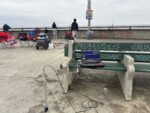
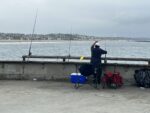
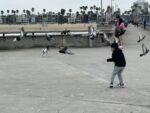
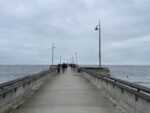
The summer in southern California has been unusually cool, and today was another rare overcast August morning. An anomalous high pressure system has been stationed over the northwest Pacific resulting in strong oceanic upwelling along the California coast. The cool water has a chilling effect along the coast. Not to worry, further inland, heat records are being set.
With NOAA 18 and 19 fading away, I was hoping to capture NOAA 15 passing over at 85°. I went to the Venice Pier with unobstructed views. The pier was busy on a Saturday morning with many recreational fishers casting lines. While there wasn't much of a swell there were surfers in the water and tourists enjoying the view.
2025-08-16 23:01:00
Foto Colectania
Hangar
Ràdio Web MACBA
Barcelona, Spain
Spain
NOAA-19

2025-08-16 19:15:00
Heidi Neilson
Gilboa, New York, United States
United States
NOAA-15
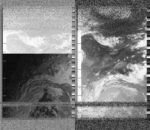
2025-08-16 19:39:00
Zack Wettstein
Seattle, United States
United States
NOAA-15
